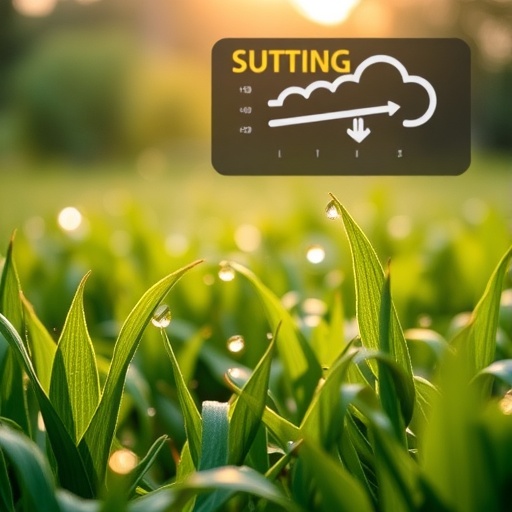In recent years, the escalating consequences of climate change have become increasingly evident across the globe. Among the most concerning manifestations of this shift are the intensification of extreme weather phenomena, notably heavy precipitation events, tropical cyclones, and prolonged heat waves. These environmental upheavals not only threaten human societies through floods and infrastructural damage but also imperil delicate ecosystems that depend on stable climatic conditions. Understanding and anticipating the behavior of such extreme weather patterns is, therefore, a critical frontier in climate science.
Central to these efforts, researchers at Kyoto University have embarked on a comprehensive investigation into how rising global temperatures will reshape precipitation patterns in Japan. Their study delves deeply into the dynamics of extreme rainfall, focusing on how atmospheric processes respond under a warming climate. This context is especially vital for Japan, an archipelago that frequently experiences typhoons and heavy rain, which already challenge disaster preparedness measures.
At the heart of the research lies the relationship between temperature and water vapor saturation. Meteorological principles dictate that for every degree Celsius increase in temperature, the atmosphere’s capacity to hold water vapor rises by approximately 7%. However, this does not straightforwardly translate into a proportional increase in rainfall. The Kyoto University team sought to clarify whether extreme precipitation scales directly with this increase in atmospheric moisture or if other factors modulate this relationship.
Leveraging sophisticated climate projections from the Japan Meteorological Agency’s Meteorological Research Institute, the researchers analyzed precipitation data specific to the Japanese archipelago. By spatially dividing Japan into seven distinct regions, they were able to capture the nuanced climatic variations influenced by geography. The study simulated both current precipitation behaviors and projected scenarios under a global mean temperature rise of four degrees Celsius, a figure representative of some of the more severe climate change projections.
The findings reveal that extreme precipitation events are poised to become markedly more intense with warming. Specifically, the magnitude of heavy rainfall increases at an approximate rate of 7% per degree Celsius, mirroring the rate of atmospheric moisture saturation. This outcome substantiates the theoretical premise that warmer air, rich in water vapor, fuels more vigorous precipitation events. Yet, the story is not solely about temperature; atmospheric humidity plays a pivotal moderating role.
Interestingly, the research underscores a nuanced pattern: the most extreme rainfall events do not occur on the hottest days of the year. Contrary to intuition, on the peak temperature days, the atmosphere tends to dry out despite high temperatures, resulting in weakened precipitation. Instead, these events predominantly arise during the second highest temperature range, when moisture levels remain sufficient to fuel rainfall. This reveals an intricate interplay between thermal and moisture conditions that governs the occurrence of extreme precipitation.
Such insights hold profound implications for climate adaptation strategies. Recognizing that the most dangerous rainfall events may not coincide with peak heat but rather coincide with periods of elevated but not maximal temperature demands a recalibration of forecasting models and disaster preparedness planning. Regional diversification in climate impacts also calls for localized approaches tailored to Japan’s varying meteorological climates.
Nonetheless, this pioneering study acknowledges limitations inherent to its methodology. The climate modeling utilized data with a spatial resolution of 20 kilometers, a scale which, while advanced, still lacks the granularity to fully capture the microphysical cloud processes responsible for extreme precipitation events. The researchers advocate for future investigations leveraging higher resolution datasets and modeling techniques that can simulate cloud dynamics with finer detail, promising a more precise understanding of extreme weather mechanics.
The Kyoto University study exemplifies how computational simulation and modeling can elucidate climate processes that are otherwise difficult to observe. It advances the broader scientific discourse on how water vapor behaves within a warming climate, especially considering vertical atmospheric layering and regional factors, which are crucial for accurate climate projections.
Significantly, these findings bolster the need for proactive climate resilience measures. Japan, with its vulnerability to intense rainfall-induced disasters such as floods and landslides, must prioritize structural and policy approaches that mitigate the expected amplification of extreme weather events. This includes urban planning adaptations, improved early warning systems, and integrative water management schemes.
This research also signals broader implications beyond Japan. As global temperatures edge upward, similar patterns of atmospheric moisture modulation and precipitation scaling are expected to manifest worldwide. Consequently, the Kyoto University work contributes valuable insights toward refining global climate models, improving the prediction of hydrometeorological risks in diverse geographies.
By exploring the vertical and regional scaling of water vapor and extreme precipitation, the study paves the way for more detailed examinations of how climate change influences weather extremes. It opens avenues for multidisciplinary approaches combining atmospheric physics, climate science, and disaster risk management to create more robust, adaptive societies in the face of intensifying climate volatility.
As the world braces for an uncertain climatic future, such research underscores the urgent importance of enhancing our predictive capacities and adapting our infrastructures accordingly. The complexities revealed through this work highlight that while the physical laws of temperature and moisture saturation provide a foundational framework, the real-world manifestations of extreme precipitation are modulated by a complex web of atmospheric conditions that must be carefully unraveled.
Subject of Research: Not applicable
Article Title: Regional and vertical scaling of water vapor with temperature over Japan during extreme precipitation in a changing climate
News Publication Date: 15-Oct-2025
Web References:
https://doi.org/10.1038/s41598-025-22287-6
References:
Takemi, T., Nayak, S., et al. (2025). Regional and vertical scaling of water vapor with temperature over Japan during extreme precipitation in a changing climate. Scientific Reports. https://doi.org/10.1038/s41598-025-22287-6
Image Credits: KyotoU / Takemi lab
Keywords: Precipitation, Rain, Climate change, Climate change adaptation, Extreme weather events




